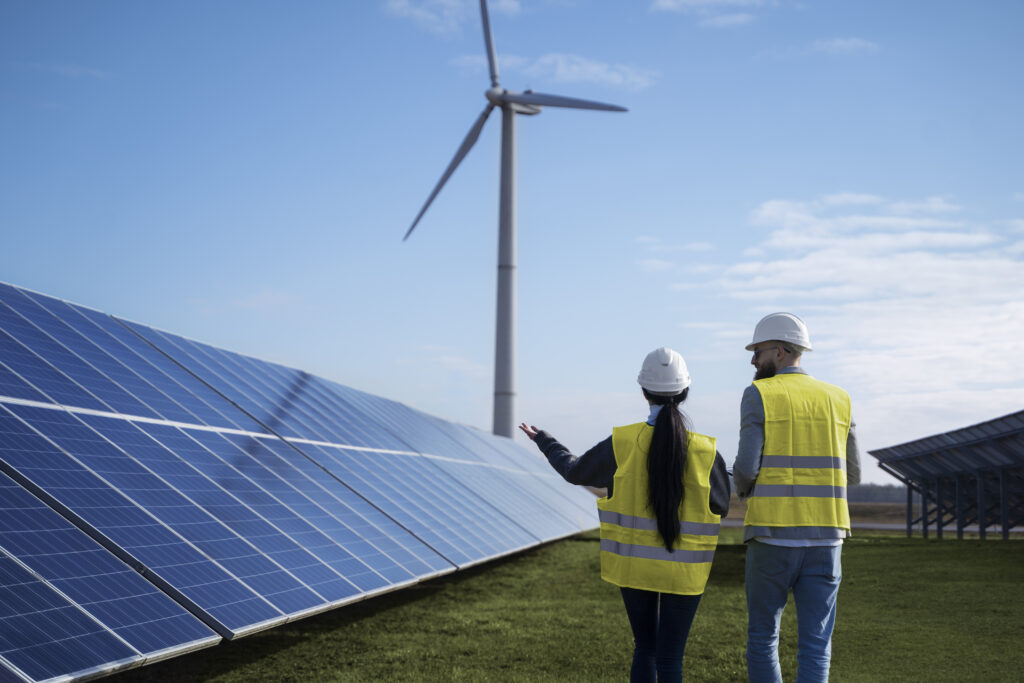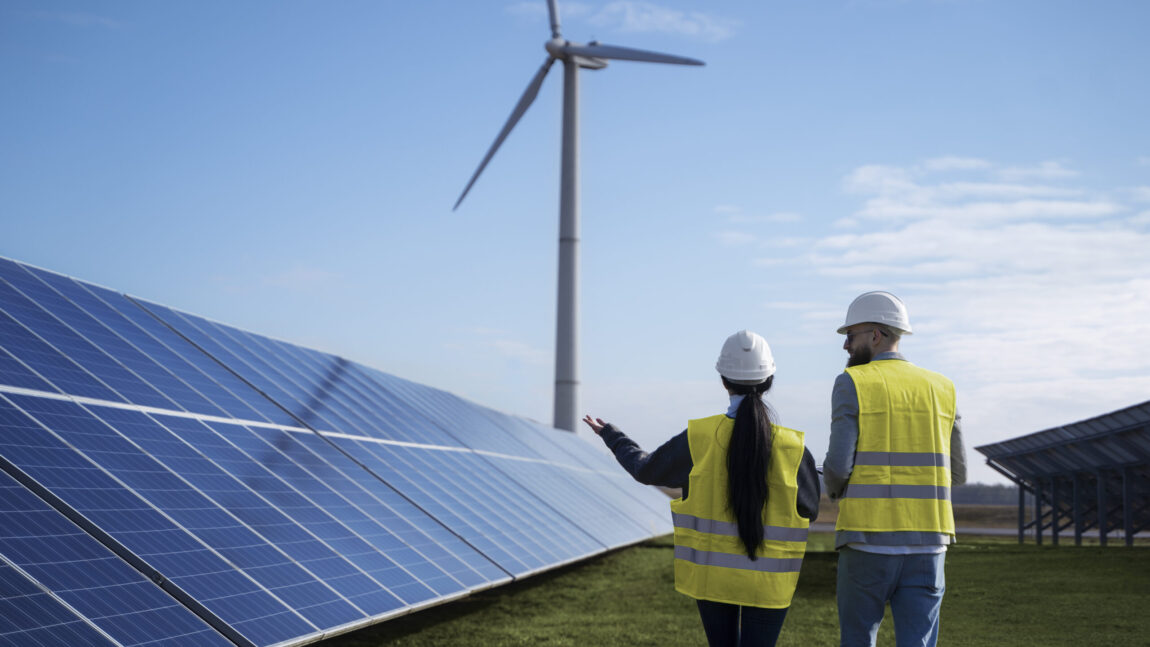Jaideep Saraswat, Nikhil Mall

The Renewable Energy India Expo 2024 has concluded, leaving behind a trail of ambitious announcements from Indian solar module manufacturers[1]. While many declared plans to expand their module manufacturing capacities, commitments to increasing solar cell production or focusing on vertical integration were rare. This trend, though understandable in the context of current market dynamics, could prove shortsighted for Indian manufacturers in the long run.
Instead of focusing solely on module production, Indian solar manufacturers should prioritise vertical integration, encompassing solar cells, wafers, and even polysilicon manufacturing. This strategic shift offers a pathway to navigate evolving global trends and secure a robust position in the international solar market.
Shifting Manufacturing Dynamics and the Need for Vertical Integration
Currently, there is an oversupply of modules in the global market leading to record-low prices and shrinking profit margins. According to some estimates, the expected solar capacity to be deployed in 2024 is around 400 GW, while manufacturing capacity stands at 935 GW[2]. Smaller manufacturers are particularly vulnerable in this environment. For Indian manufacturers, relying on imported solar cells, primarily from China, exposes them to multiple risks:
- Trade Policy Volatility: While current export opportunities exist due to embargos on Chinese modules in markets like the US[3], this advantage is fragile. If these countries impose tariffs on modules containing Chinese cells, Indian manufacturers’ investments could be jeopardised.
- Technological Transitions: The solar industry thrives on innovation, with newer, more efficient cell technologies constantly emerging. Vertical integration empowers manufacturers to swiftly adapt to these technological shifts, maintaining a competitive edge. By controlling the entire production process, from polysilicon to modules, Indian manufacturers can seamlessly transition to cutting-edge technologies, ensuring their products remain in high demand.
- Meeting Domestic Demand: The Government of India’s (GoI) proposition to implement the Approved List of Modules and Manufacturers (ALMM) for solar cells from April 1, 2026, necessitates sourcing from domestic suppliers[4]. The significant gap between cell manufacturing capacity at 7.2 GW and module manufacturing capacity at 77.2 GW in India poses a challenge[5]. Vertical integration is crucial to bridge this gap, enabling Indian manufacturers to cater to the burgeoning domestic demand while adhering to government regulations.
- Evolving Sustainability Requirements: The focus is increasingly shifting toward reducing the energy, water, and emissions associated with manufacturing solar modules. An example is China’s Ministry of Industry and Information Technology (MIIT) submitting a revision of the “Photovoltaic Manufacturing Industry Normative Conditions” policy for public consultation, aiming to set stricter sustainability criteria[6]. Future projects will be subject to these requirements, creating a challenge for manufacturers who only produce modules. With limited control over the upstream processes, manufacturers will find it difficult to meet these criteria unless they have full transparency and cooperation from their suppliers.
What Vertical Integration Offers
- Hedging Against Trade Risks: Vertical integration insulates Indian manufacturers from the uncertainties of global trade policies. By sourcing key components domestically, they reduce their reliance on imports, mitigating potential disruptions caused by tariffs, embargos, or other trade barriers.
- Capitalising on Anti-Dumping Measures: Producing cells and modules domestically allows Indian manufacturers to target markets with anti-dumping duties on Chinese products[7]. This opens doors to new markets and reduces dependence on regions susceptible to policy fluctuations.
- Enhanced Profitability: While the initial investment in vertical integration might seem daunting, the long-term benefits are substantial. Controlling the entire production process, from raw materials to finished modules, allows manufacturers to optimise costs, capture a larger share of the value chain, and improve profitability.
- Implementing Sustainable Practices: Vertical integration enables manufacturers to directly optimise production processes to reduce environmental impacts such as energy consumption, water usage, and emissions. By gaining control over the entire supply chain, companies can more effectively align their practices with global sustainability standards.
- Ensuring Data Transparency: When manufacturers control the complete production process, they have access to all relevant data needed to demonstrate compliance with stringent sustainability criteria. This transparency strengthens competitiveness in markets that emphasise environmental responsibility.
- Strengthening Brand Reputation: Positioning as leaders in sustainability allows manufacturers to differentiate themselves and build a strong reputation. Customers and investors increasingly focus products from companies committed to sustainable practices, offering a competitive advantage in the market.
This year’s RE India Expo showcased the ambitious goals of Indian solar module manufacturers. However, achieving true leadership in the global solar industry requires a strategic emphasis on vertical integration, along with significant investments in research and development of advanced, cost-effective technologies that can exceed the theoretical Shockley-Queisser Limit of approximately ~33.5% for single-junction solar cells[8]. Needless to say, government intervention is crucial to support manufacturers in establishing vertically integrated facilities. By adopting this approach, Indian manufacturers can strengthen their position in both domestic and international markets, positioning India as a leader in the solar PV sector.
[1] https://www.pv-magazine-india.com/2024/10/13/key-takeaways-from-renewable-energy-india-expo-2024/?utm_source=dlvr.it&utm_medium=linkedin
[2] https://ember-climate.org/insights/research/china-spare-solar-climate-energy-opportunity/
[3] https://gfmag.com/economics-policy-regulation/new-us-tariffs-begin-on-chinese-goods/#:~:text=In%20September%2C%20the%20US%20adopted%20a%20100%25%20tariff,Chinese%20semiconductors%20is%20to%20be%20implemented%20next%20year.
[4] https://mnre.gov.in/notice/request-for-comments-on-almm-approved-list-of-models-manufacturers-for-solar-pv-cells/
[5] https://energy.economictimes.indiatimes.com/news/renewable/india-adds-11-3-gw-solar-module-capacity-in-1h-2024-solar-imports-soar-by-338/114063015#:~:text=As%20of%20June%202024%2C%20India%E2%80%99s%20cumulative%20solar%20module,module%20production%20and%20100%25%20of%20cell%20production%20capacity.
[6] https://www.pv-magazine-india.com/2024/07/11/china-to-impose-stricter-requirements-on-pv-manufacturing/?utm_source=dlvr.it&utm_medium=linkedin
[7] https://www.whitecase.com/insight-alert/us-department-commerce-determines-imports-southeast-asia-are-circumventing-addcvd
[8] https://pubs.acs.org/doi/10.1021/acsenergylett.0c01790




